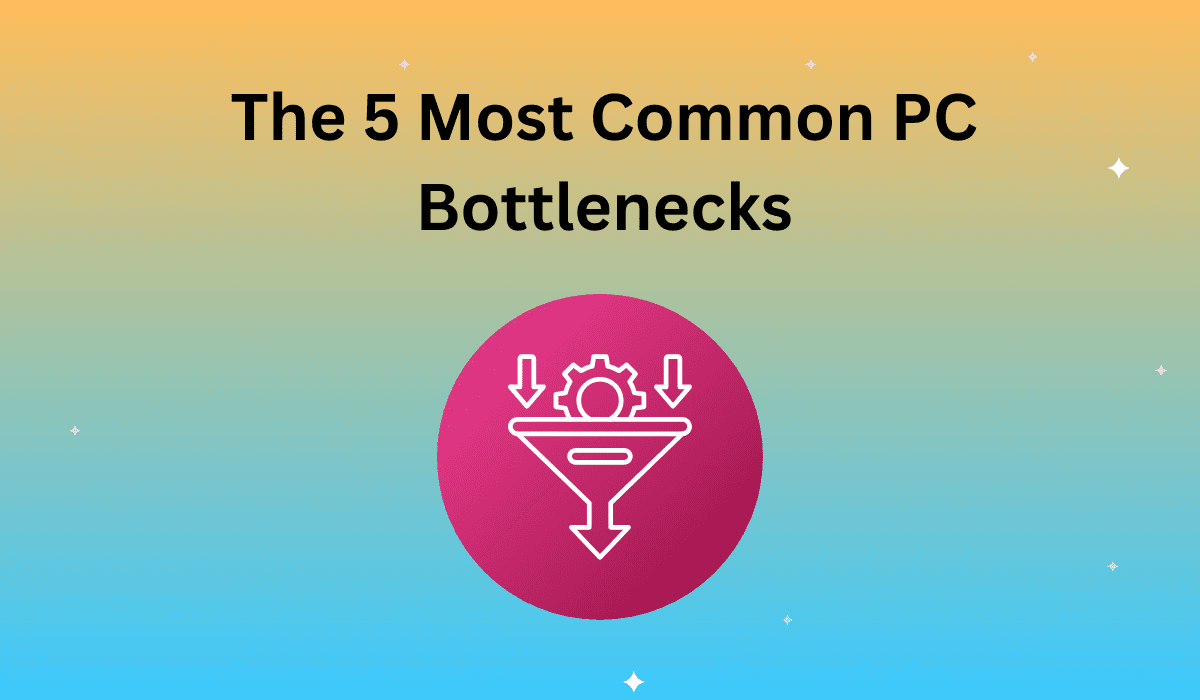Performance bottlenecks can lead an otherwise functional computer or server to slow down to a crawl. The term “bottleneck” refers to both an overloaded network and the state of a computing device in which one component is unable to keep pace with the rest of the system, thus slowing overall performance. Addressing bottleneck issues usually results in returning the system to operable performance levels; however, fixing bottleneck issues requires first identifying the underperforming component.
These five performance bottlenecks causes are among the most common:
CPU Utilization
According to Microsoft, “processor bottlenecks occur when the processor is so busy that it cannot respond to requests for time.” Simply put, the CPU is overloaded and unable to perform tasks in a timely manner.
CPU bottleneck shows up in two forms: a processor running at over 80 percent capacity for an extended period of time, and an overly long processor queue. CPU utilization bottlenecks often stem from insufficient system memory and continual interruption from I/O devices. Resolving these issues with a simple CPU bottleneck test results in increasing CPU power, adding more RAM, and improving software coding efficiency.
Memory Utilization
A memory bottleneck implies that the system does not have sufficient or fast enough RAM. This situation cuts the speed at which the RAM can serve information to the CPU, which slows overall operations. In cases where the system doesn’t have enough memory, the computer will start offloading storage to a significantly slower HDD or SSD to keep things running. Alternatively, if the RAM cannot serve data to the CPU fast enough, the device will experience both slowdown and low CPU usage rates.
Resolving the issue typically involves installing higher capacity and/or faster RAM. In cases where the existing RAM is too slow, it needs to be replaced, whereas capacity bottlenecks can be dealt with simply by adding more memory. In other cases, the problem may stem from a programming error called a “memory leak,” which means a program is not releasing memory for system use again when done using it. Resolving this issue requires a program fix.
Network Utilization
Network bottlenecks occur when the communication between two devices lacks the necessary bandwidth or processing power to complete a task quickly. According to Microsoft, network bottlenecks occur when there’s an overloaded server, an overburdened network communication device, and when the network itself loses integrity. Resolving network utilization issues typically involves upgrading or adding servers, as well as upgrading network hardware like routers, hubs, and access points.
Software Limitation
Sometimes bottleneck-related performance dips originate from the software itself. In some cases, programs can be built to handle only a finite number of tasks at once so the program won’t utilize any additional CPU or RAM assets even when available. Additionally, a program may not be written to work with multiple CPU streams, thus only utilizing a single core on a multicore processor. These issues are resolved through rewriting and patching software.
Disk Usage
The slowest component inside a computer or server is typically the long-term storage, which includes HDDs and SSDs, and is often an unavoidable computer bottleneck. Even the fastest long-term storage solutions have physical speed limits, making this bottleneck cause one of the more difficult ones to troubleshoot. In many cases, disk usage speed can improve by reducing fragmentation issues and increasing data caching rates in RAM. On a physical level, address insufficient bandwidth by switching to faster storage devices and expanding RAID configurations.
The experts at Apica offer load testing and monitoring tools for your business’s online platforms that excel at identifying performance bottlenecks that hinder performance and running system bottleneck tests. If you’re looking to get the most out of your platforms, contact the experts at Apica today.
Facebook Photo Credit: https://stevecutts.wordpress.com/tag/buffering/











